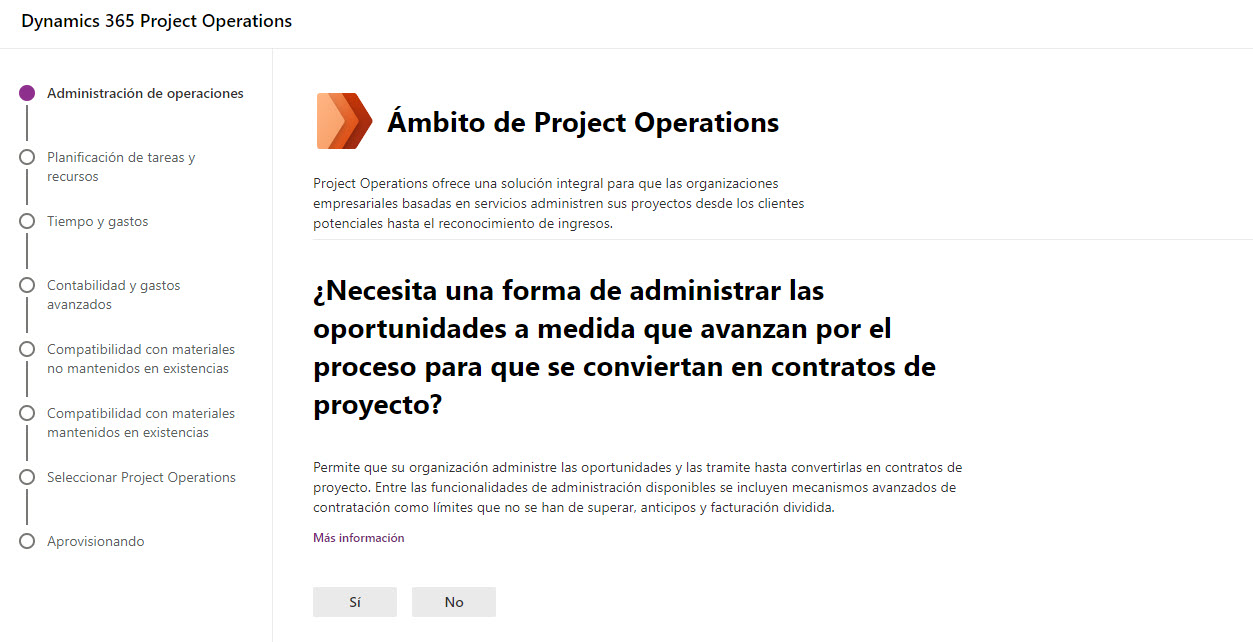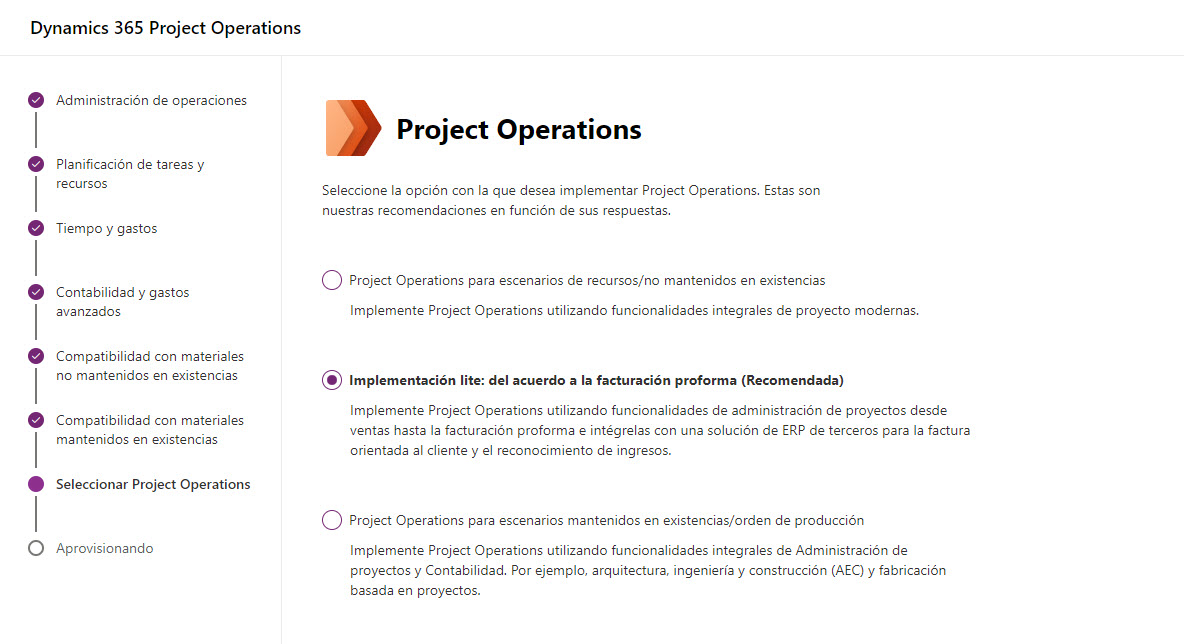Within the Microsoft’s business solutions in Dynamics 365 we find “Project Operations” that extends the capabilities of Microsoft Dynamics Customer Engagement by providing an end-to-end system for managing sales, resources, time planning, delivery and project billing.
We distinguish different Project Operations deployment types:
- Lite deployment – deal to proforma invoicing.
- Project Operations for resource/non-stocked scenarios
- Project Operations for stocked/production order scenarios
The deployment type is determined by a set of questions when deploying the solution in an environment.


You can get more information about deployment types here https://learn.microsoft.com/en-us/dynamics365/project-operations/environment/determine-deployment-type
In this article, we are going to focus on the “Lite” deployment, where all the functionality is inside Dynamics Customer Engagement; the other two types are designed for integration with Microsoft Finance and Operations through Dual Write, but we can do other integrations with different ERP deployment types.
Project Operations functionality
The Project Operations functionality can be summed up:
Sales Opportunity:
Lead Qualification
Opportunity tracking
Estimation based on projects
Quoting and Contractions
Project Planning:
Project Task definition (WBS)
Task Planning
Effort and costs estimation by task and roles
Booking and assigning tasks to resources
Resources Management:
ERP integration, for example Dynamics FNO
Roles, Skills and competition levels definition
Lookup resource by roles, skills, locations…
Price lists by roles
Time/Expenses Entries:
Time and expenses imputation
Time and expenses approved by a Project manager
Expenses categories
Invoicing:
Billing based on milestones or effort
Billing status tracking
IERP Integration:
ej. Dynamics 365 FNO
More details in https://dynamics.microsoft.com/es-es/project-operations/overview/
If you are already familiar with Dynamics 365, you will find that Project Operations makes use of data types and capabilities included in Dynamics 365 Sales, for example:
- Lead
- Accounts (Customers/Vendors)
- Contacts
- Opportunities
- Quotes
- Sales orders/Project Contract (Contract created when a quote is won)
- Price Lists (Lists used to define price costs and sales list prices by roles, expenses and materials)
- Products
- Sales units
- Currencies
In addition, the following types of data are included:
- Project (Tasks definition, calendars, costs, resource allocation)
- Organizational units (Divisions or business lines)
- Resource (Person or collaborator that could be planned and assigned to a task)
- Requirements (Requirements that needed by a task In order to find its ideal resource)
- Requests (Resources requested for a project)
- Booking resources
- Capabilities (Skills that resources may or not have)
- Roles (Resource Categorization)
- Competence model (The level that a resource has for a certain capacity)
- Time and expenses entry
- Time and expense approvals
- Billing and milestones
¿Cómo empezar con Project Operations?
Microsoft allows us to deploy a Project Operations in a test environment through the following link https://www.aka.ms/try-po
Once the environment Is created, we can see the following apps:

- Project Operations, App that offers us all the functionality of Sales, Project and resource management.
- Project Oerations Team member, app designed for resources to entry time and expenses
- Resourcing scheduling, resource and schedule board management
- Project app, an app focused exclusively on the project management functionality
We have the option to load sample data, Through this link we will be able to download it and it also explains us how to import the data https://learn.microsoft.com/en-us/dynamics365/project-operations/environment/lite-apply-demo-setup-config-data
Once we have our environment created, the first step we may follow is configure the following sections:
- Currencies
- Group and sales units
- Products
- Organizational Units
- Transaction categories
- Price costs and sale by roles/expenses lists
- Resources
- Resource roles
- Skills
- Working calendars
- Project parameters
- Billing frequency
In future articles we will explain each of these sections and their configuration.
See you soon :)


